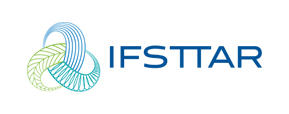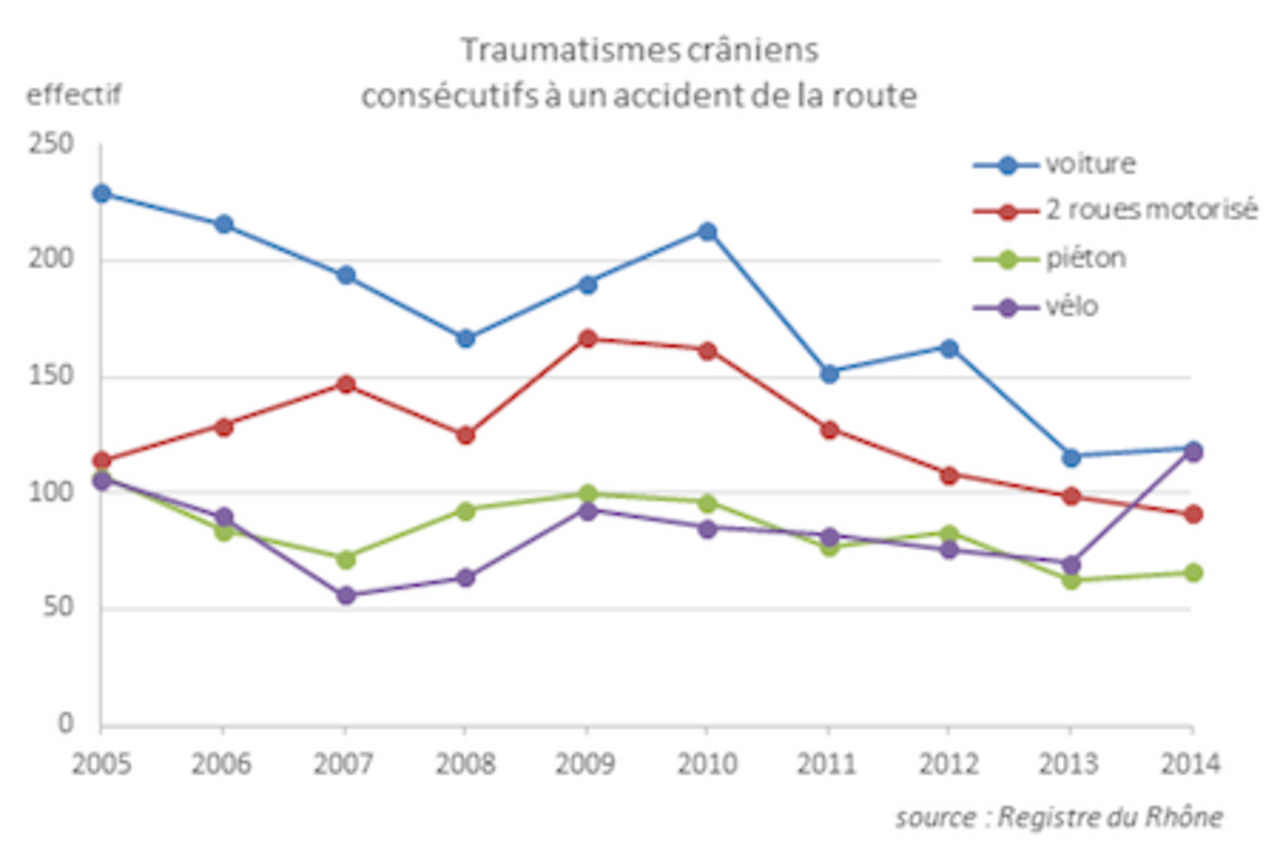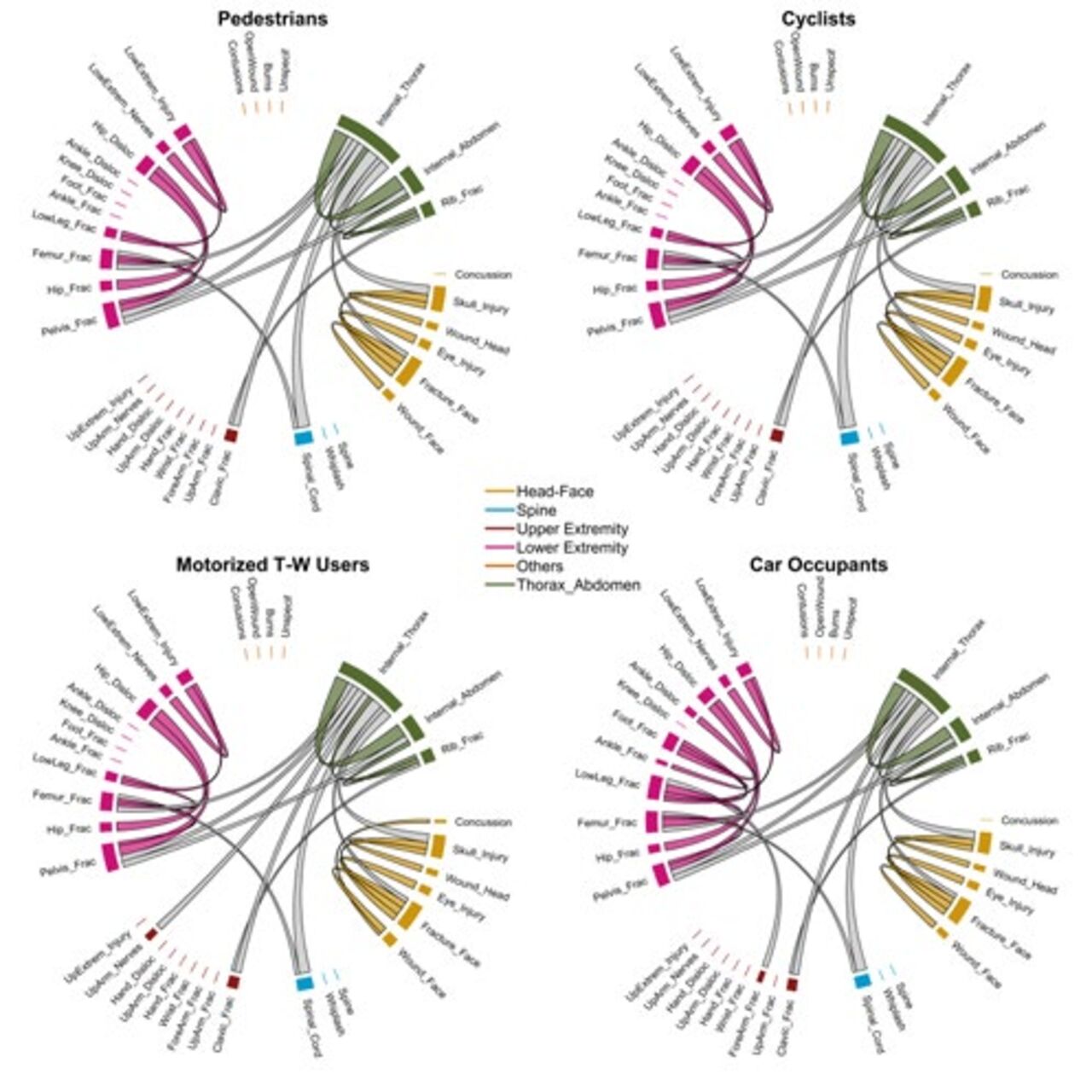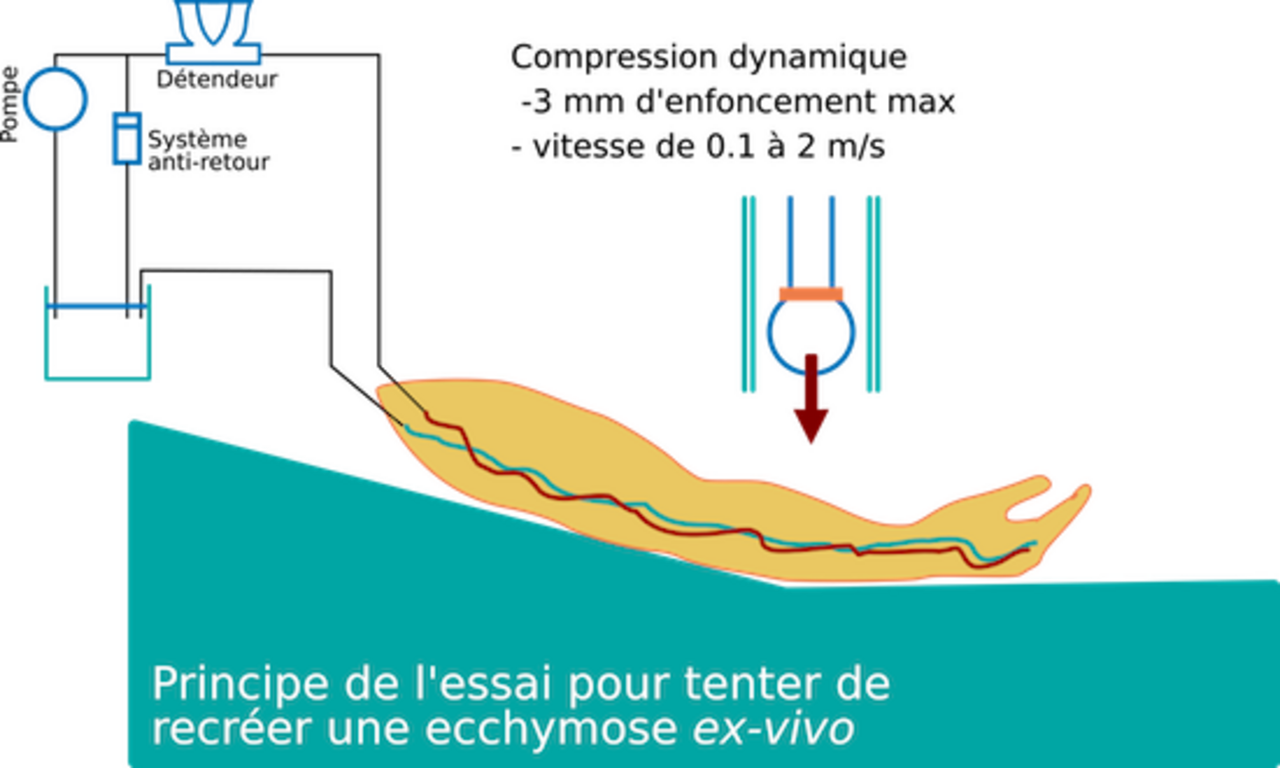(copie 1)
Road safety and the human consequences of accidents
Even if driving automation has, in the long term, the potential to reduce the number of accidents caused by unsatisfactory driver behaviour, there is still a long way to go. The signs of a worsening road safety situation require us to conduct further detailed analysis of the causes of accidents and analysis of injury mechanisms. Here again, data are essential for assessing situations and devising solutions. The Rhône Register, created in 1995, still remains a powerful research tool for monitoring road trauma victims and better understanding the link between accidents and trauma, as was investigated in the analysis of cranioencephalic traumas.
Analysis of cranioencephalic traumas
Cranioencephalic traumas are one of the leading causes of death or disability in industrialized countries. Road traffic accidents are responsible for one third of head injuries of all severity levels combined (Scholten, 2014) and this proportion rises to half for severe head injuries (Masson, 2001). The frequency and severity of these traumas has prompted the French Public Health Commission to consider the issue and fund a study to provide a more accurate description of cranial trauma injuries. It was possible to conduct this study thanks to the Rhône Register which was set up by UMRESTTE in 1995. It is the only French database that provides a detailed description of injuries regardless of the severity of the trauma. The aim was to take stock of the analyses already carried out on the Register and to describe brain injury casualties in terms of the frequency, impacts, demographic characteristics, circumstances, nature and severity of the injuries. Of the 80,542 victims identified in 2005-2014, the Register included 4913 head injuries. The average annual incidence was 28.5/100,000, and higher among males (43/100,000 versus 15/100,000 for females). Head trauma victims were mainly motorists (36%) followed by motorcyclists (24%), pedestrians (17%) and cyclists (17%). While the number of head injuries among motorists has halved since 2005, more remains to be done for vulnerable road users. A report has been sent to the French Public Health Commission (Santé Publique France) and a poster has been accepted at the EuroEpi2018 Congress to be held in Lyon from 4 to 6 July.
DALVAR: Description of the associations between the Injuries sustained by road traffic accident casualties
In 2017, the data from the Rhône Register was exploited for a second time in order to study the injuries sustained by road accident casualties. When the emergency services arrive at an accident scene, it is important for them to assess as accurately as possible the severity of the injuries sustained by each casualty in order to improve their care and refer them to appropriate hospital facilities. It was shown that the injury association profiles differ according to the type of user (cyclist, motorist, motorcyclist or pedestrian). The DALVAR targeted initiative has allowed a number of instructions for the care of the injured to be defined.
Diagnosing the injuries sustained by accident casualties is challenging because the injuries are usually closed (as opposed to the injuries sustained by victims of stabbing, for example), particularly when internal organs are impacted. We can therefore try to predict their presence based on other injuries that have been sustained. One way to approach this is to describe the associations between different injuries among casualties.
These associations may depend on the circumstances of the accident, in particular the type of user (motorist, pedestrian, cyclist, etc.). Thus, to study the associations between injuries among traffic accident casualties, it seems quite appropriate to consider the population of casualties as a set of strata defined by the circumstances of the accident. The Dalvar targeted initiative simultaneously estimated several graphical models, each describing the conditional independence relationships among a set of variables in a given stratum.
The preliminary findings using data from the Rhone Register made it possible to study the association profiles for the injuries sustained by road accident casualties, according to the type of road user: cyclist, motorist, motorcyclist and pedestrian.
CHUT: Better understanding skin injuries in order to propose design improvements for passenger compartments
As can be judged from the research mentioned above, describing the consequences of an accident in terms of injuries provides great benefits. Pursuing the same objective, the targeted initiative "CHUT: Characterisation of Haematomas among Transport Users" aims to quantify the stresses that may cause bruising or haematomas. It is based on a digital model of the skin. This research aimed to develop a tool to predict the risks of injury from minor injuries. CHUT was led by the Biomechanics and Impact Mechanics Laboratory in the TS2 department over the 2016-2017 period. The research team consisted of K. Bruyère (Senior Researcher), M.-C. Chevalier (Research Engineer), S. Nicolle (Lecturer) and M. Ottenio (Lecturer). Their objective was to launch research that would eventually lead to the development of a tool for predicting injury risks for minor injuries, such as bruising. At present, there is no reliable tool for predicting this type of injury. Nevertheless, such injuries occur frequently among the users of "soft" transport modes. To determine the mechanical criteria that are just sufficient for bruising to occur, an ex vivo experimental dynamic compression protocol was devised for the upper limb. "Revascularisation" of the limb, without which no bruising can occur, was then attempted, but without complete success. For the time being, applying static pressure is the adopted method. In parallel with this experimental approach, a multilayer digital model of the skin (dermis and hypodermis) with capillaries was developed to simulate at the local level what happens during an impact on the zone in question and thus determine the maximum stresses/deformations applied to the capillary walls. An experimental campaign was carried out to characterise the mechanical properties of isolated capillaries in order to determine their breaking point.




